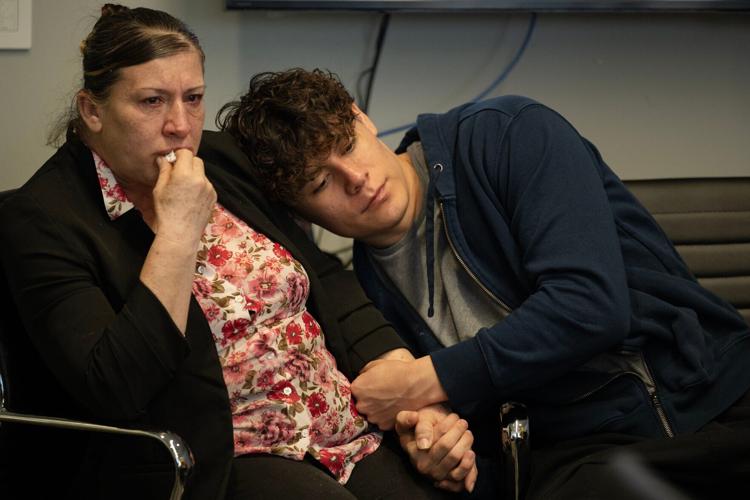No justice for Luis Garcia; no accountability for DPS | Jimmy Sengenberger
Luis Garcia was just 16 years old when he was shot eight times, sitting in his car outside East High School and heading out to a friend’s birthday party. He never woke up. Two weeks later, the beloved star soccer player was gone.
Garcia was senselessly murdered on Feb. 13, 2023. Nearly two and a half years later, a judge has tossed the family’s wrongful death lawsuit against Denver Public Schools — and the Denver DA still hasn’t filed charges, even though there’s long been a definitive suspect.
“Getting into his car about to drive away, (Garcia) was gunned down — murdered, in cold blood, shot in the face,” attorney Matthew Barringer, representing the Garcia family, told me Tuesday on KOA radio.
The lawsuit alleged DPS and the school board “breached their duty” under the Claire Davis School Safety Act to “maintain a safe environment,” directly contributing to Garcia’s death.
The Claire Davis Act carves out an exception to the legal shield known as “sovereign immunity,” allowing schools to be sued for failing to protect students from “reasonably foreseeable” violence within school facilities.
Barringer argued the Claire Davis Act applied because Garcia was killed in an area seamlessly connected to East’s athletic fields and parking — making it “within school facilities,” per the law.
But Judge Kandace Gerdes disagreed, ruling that, because she shooting happened on City Park Esplanade — with an RTD bus stop at the intersection — it took place a public thoroughfare, not school grounds. That distinction lets the district off the hook.
“Accordingly, DPS defendants retain their immunity from tort liability,” Gerdes wrote, dismissing the case.
Barringer has filed a notice of appeal.
“Where does (their duty) to protect students end?” he asked. “Is it when you step out of the school, they don’t have a duty anymore? Does it have to happen within the (building)?”
The ruling precludes Barringer from presenting his core argument in court: that DPS “had been negligent,” particularly when it removed school resource officers (SROs) from district schools in 2020.
He told me last year that SROs had been “stationed a stone’s throw from where Luis was murdered” — a visible deterrent to violence, stripped away by the board amid the George Floyd protests.
According to Barringer, Garcia’s father, Santos, put it bluntly: “If there would have been an SRO there, my kid would be alive today.”
Let’s be honest: While no single measure guarantees safety, there’s no question that an on-campus law enforcement presence deters violence — and DPS knows it.
After Garcia’s murder, Superintendent Alex Marrero briefly returned SROs to East High. But it took another tragedy — a student shooting two deans the following month — for the board to reverse course. They voted unanimously to temporarily reinstate them districtwide, and a majority made it permanent two months later.
“I think to a certain extent (SROs) provide a deterrent effect,” former DPS board member Charmaine Lindsay told me in March 2023. She was the first to publicly back reinstating SROs — and wasn’t on the board when they were removed.
Two other lawsuits — by former East Deans Wayne Mason and Eric Sinclair — are pending. Yet DPS hasn’t investigated that shooting, where 17-year-old Austin Lyle fired on the deans during a “routine pat-down.” He later took his own life.
Lyle was both on probation and previously expelled from another district for weapons violations. DPS required staff to pat students down for weapons without training or SROs present as backup — and there hasn’t been an internal investigation?
Recent changes to the district’s discipline matrix still don’t help. “It’s anemic. It’s weak. It’s a slap in the face,” one high school teacher told me.
Let’s be real: DPS’ refusal to fix broken policies or affirmatively protect students and staff from violent students shows they’ve learned little, if anything.
Meanwhile, it seems Denver District Attorney John Walsh has learned little from the politically driven prosecutions of his predecessor, Beth McCann. What else explains why there still hasn’t been an arrest in Garcia’s murder — despite having identified a prime suspect over two years ago?
Barringer said he’s spoken extensively with detectives. The Denver Police Department isn’t the one dropping the ball.
“They are frustrated. They want this to be filed,” he said. “I have talked to the lead detective on several occasions. They have done their job.”
The DA’s office inexplicably “refuses” to file charges.
In a statement last week, the office claimed the investigation is ongoing: “Luis Garcia’s death was a terrible tragedy that deeply impacted his family, friends and countless Denver residents. We remain optimistic that the person or people responsible will be held accountable. Our investigation of the case remains open and active.”
Curious words from an office with a history of letting politics interfere with prosecutorial decisions — a pattern I’ve documented before. Is that what’s happening here?
Barringer noted that, in the civil case, DPS lawyers didn’t dispute who the shooter was. “Not once,” he said. “The defense wasn’t, ‘Well, we had this random person. How could we defend against that?’ No — they said we agree. That’s who did it.”
Yet, even with an apparent consensus on the shooter’s identity and confident detectives, the DA still won’t act.
Where is justice for Luis Garcia?
And where is accountability for Denver Public Schools’ failures?
Jimmy Sengenberger is an investigative journalist, public speaker, and longtime local talk-radio host. Reach Jimmy online at Jimmysengenberger.com or on X (formerly Twitter) @SengCenter.
Jimmy Sengenberger is an investigative journalist, public speaker, and longtime local talk-radio host. Reach Jimmy online at Jimmysengenberger.com or on X (formerly Twitter) @SengCenter.






